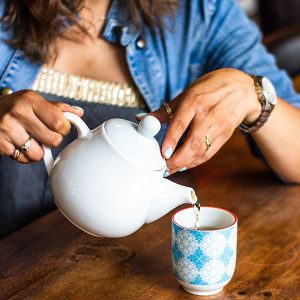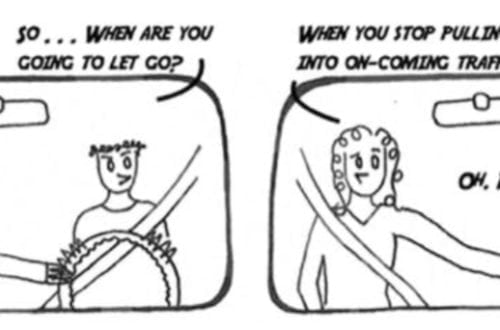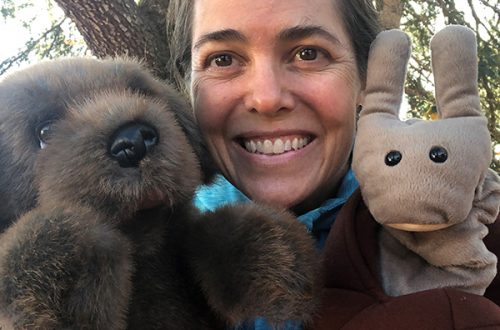A Doctor of Chinese Medicine
By Jeanette Prather
 “From what we’ve seen in Chinese medicine, COVID-19 is really going to take root and be a harder disease for patients who have cold lungs and cold digestive systems,” local doctor of Chinese medicine, Dr. Nihal Kaur, offered freely. “This means no sugar, sweets, ice cream, drinks, etc., but rather hot drinks like tea, soups and broth are best. Make sure that your digestive system is warm, with a combination of ginger and licorice tea being the best.”
“From what we’ve seen in Chinese medicine, COVID-19 is really going to take root and be a harder disease for patients who have cold lungs and cold digestive systems,” local doctor of Chinese medicine, Dr. Nihal Kaur, offered freely. “This means no sugar, sweets, ice cream, drinks, etc., but rather hot drinks like tea, soups and broth are best. Make sure that your digestive system is warm, with a combination of ginger and licorice tea being the best.”
This is just one of the small anecdotes that Dr. Kaur offers her patients via online sessions instead of her traditional in-person appointments. Dr. Kaur is fortunate enough to deliver prevention tips and services to her clients remotely. “I stopped meeting with patients once I heard Governor Newsom’s shelter-in-place mandate. I called my high-risk patients and asked them to stay home; I’m really happy that I made that choice for the safety of my patients.”
Another bit of advice Dr. Kaur has been sharing across multiple platforms, is an article titled, Specific Applications of TCM in the Prevention and Treatment of COVID-19 & Integration of TCM into Educational Curriculum, that was released on February 10, 2020 from a Chinese integrative medical institute named eLotus. “Before the virus got to the U.S. those of us trained in Chinese herbalism were really watching it,” said Dr. Kaur. “One hospital really put their policies in place, mandating their employees to take preventative Chinese herbal formulas for free. People right on the frontline were taking big early formula preventative measures specialized for them – preventing it from entering the body before it could take hold. The secondary lines would take more mild formulas with boosters in case they caught it. Non-patient-contact workers were taking a simple formula that anyone could get at the store.”
The referenced article was derived from a blog post by Dr. Tang Ying, the director of the Infectious Disease Department at the county-level hospital in Henan Province, China. The doctor, hoping to prevent the spread of COVID-19 and providing guidelines to counsel other medical professionals, wrote this:
“Since January 21, 2020, there have been twenty-five individual patients admitted to our hospital, each of them exhibiting a fever. Amongst them, four were confirmed to have coronavirus, seventeen returned from Wuhan, six were in close contact with locals, and two were from other regions (where there were confirmed cases). Today, all twenty-five of them have recovered and returned safely home. Seventeen people were discharged (including one of them with confirmed infection), eight others indicated as in normal, stable condition in the hospital under observation, to be discharged in a few days. None of the thousands of employees in our hospital were infected.”
The article (located here: elotus.org/article/specific-applications-tcm-prevention-and-treatment-covid-19-integration-tcm-educational-curr) showed very specific images of the formula labels used to prevent any of the hospital’s thousands of employees from contracting COVID-19. “As a county hospital, these results are only possible given our specific training in and application of Traditional Chinese Medicine [TCM],” it wrote. “We believe that this strategy has protected more than 1,000 employees in our hospital from infection. Optimally, we should treat the patient with herbal medicine within two hours of learning of their diagnosis.”
The hospital focused more on the prevention of spread and treated patients immediately upon diagnosis. They even went as far as opening a section of the hospital dedicated solely to preparing herbs for patients to consume on the spot, according to the article. The type of herb was allocated depending on the severity of the case. “If the body temperature is above 37.8 C, give Da Qing Long Tang (Major Bluegreen Dragon Decoction) immediately instead of waiting for the patient to develop a high fever,” read the article. “If the temperature is below 37.8 C, give Ge Gen Tang (Kudzu Decoction) with Fu Ling (Poria) and Bai Zhu (Rhizoma Atractylodis Macrocephalae).”
The article went on to explain how to treat patients with water in the lungs, a turbid cough, an irritating dry cough, nausea, and other symptoms.
“The reason the sharing of this information is so vital at this time in history [early February], is that county level hospitals have typically only used western medicine to treat these types of epidemics,” wrote the article. “Given the success of using Chinese medicinal herbs by this county hospital, we have learned that immediately adopting TCM methods to boost the efficacy of treatment is necessary and warranted.”
The article referenced by Dr. Kaur accompanies many more resources to the public free of charge. One particular article that mirrors this one, is elotus.org/article/how-covid-19-2019-ncov-currently-treated-china-tcm. It outlines the entire life cycle of an infected COVID-19 patient and explains the care procedure utilizing Chinese medicine within each stage.
“When I was placing my orders at the beginning of all of this, the vendors had to put caps on all the orders because of high demand,” said Dr. Kaur. “I couldn’t get as many herbs as I had wanted, but they’re finally catching up.”
Doctor Nihal Kaur, who continues to send her patients care packages with herbs they have been taking, or ones that she thinks will benefit them during this time, is balancing her now-virtual-only practice while raising her toddler son and continuing to care for her family. “It’s hard,” said Dr. Kaur, “But like everyone else, we’re making it work.”








